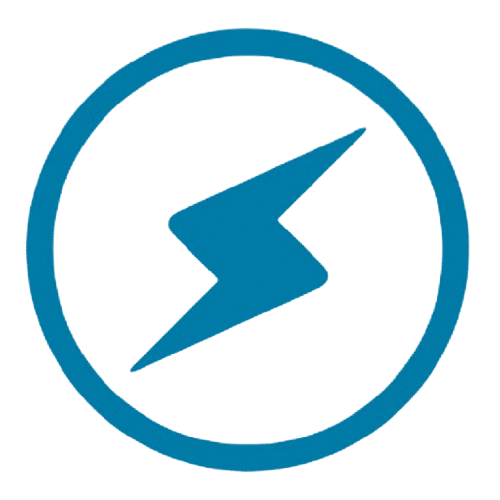
Why Getting Verified on Google Is Essential
Your name appearing on Google’s front page—with a verified box—is more than vanity. It’s digital authority.
Dennis Yu, CEO of BlitzMetrics and a former search engine engineer, has helped thousands of entrepreneurs and young adults gain credibility online. He’s worked with Nike, Rosetta Stone, and top media outlets, and recently led a Link Whisper AMA to teach professionals how to get their Google Knowledge Panel—step by step.
“Being verified on Google is more valuable than being verified on Instagram, Twitter, or Facebook—and it’s free.” — Dennis Yu
This guide distills Dennis Yu’s live training with Link Whisper into a practical, step-by-step framework anyone can follow.
What Is a Google Knowledge Panel?
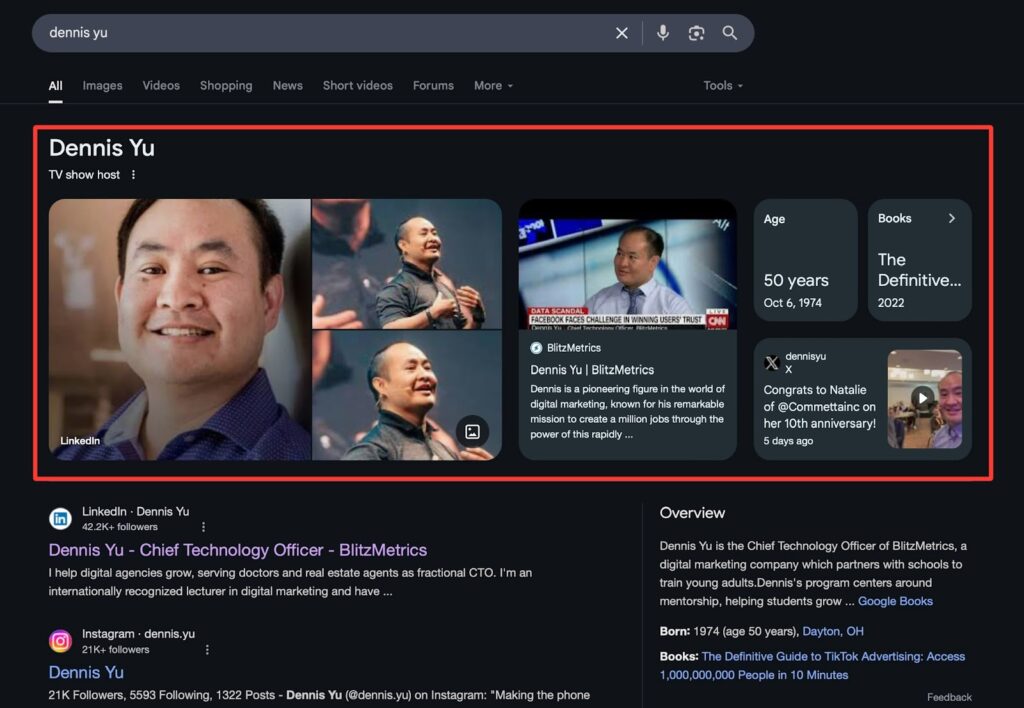
A Knowledge Panel is the official information box that appears on Google when you search for a recognized entity. It confirms your identity and links your profile to other public data sources across the web.
It signals:
- Authority (you’re recognized by Google)
- Credibility (your presence is fact-checked)
- Visibility (you own prime real estate in search results)
Why You Need a Knowledge Panel
- Rank higher for your name or brand
- Establish trust with clients, employers, and media
- Train Google to show the correct identity (not someone else)
- Shield yourself from algorithm changes and AI mislabeling
You’re not just creating content. You’re feeding Google back what it already knows about you—organized properly.
Step-by-Step: How to Get a Google Knowledge Panel
1. Audit Yourself on Google
Search your name. Do you:
- Control the top search results?
- Own your LinkedIn, website, and all other major social profiles? (Twitter/X, YouTube, Instagram, etc.)
- Appear in multiple places that don’t link together?
Use tools like Gemini, Grok, and ChatGPT to map your footprint and see how Google currently perceives you.
2. Assemble Proof of E-E-A-T
Google verifies you through:
- Experience: Speaking, interviews, case studies
- Expertise: Articles, training, documentation
- Authority: Credible third-party mentions
- Trust: Consistent branding and citations
3. Strengthen Internal Linking with Link Whisper
Internal linking matters. Google uses it to:
- Connect your bios, interviews, and blog posts
- Boost your most important citations
- Clarify the relationships between entities
4. Claim the Panel (Strategically)
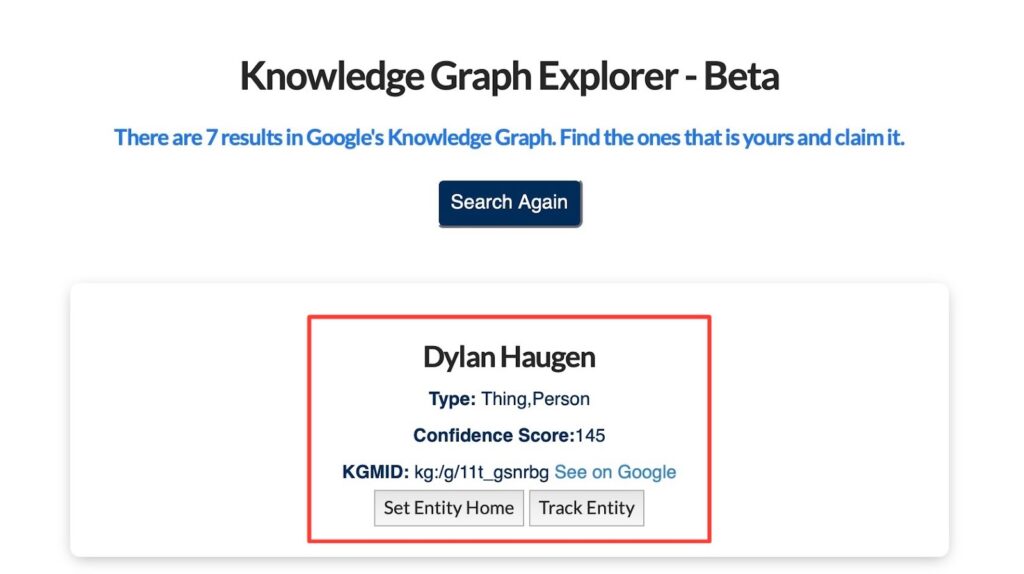
Not all Knowledge Panels are publicly visible in search. If you don’t see one for your name, use the Knowledge Graph Explorer to check if Google already has an entity for you.
Enter your name, and look for an existing object ID and confidence score. If one exists, click the three dots in the top right corner of the panel and select “Claim this Knowledge Panel.”
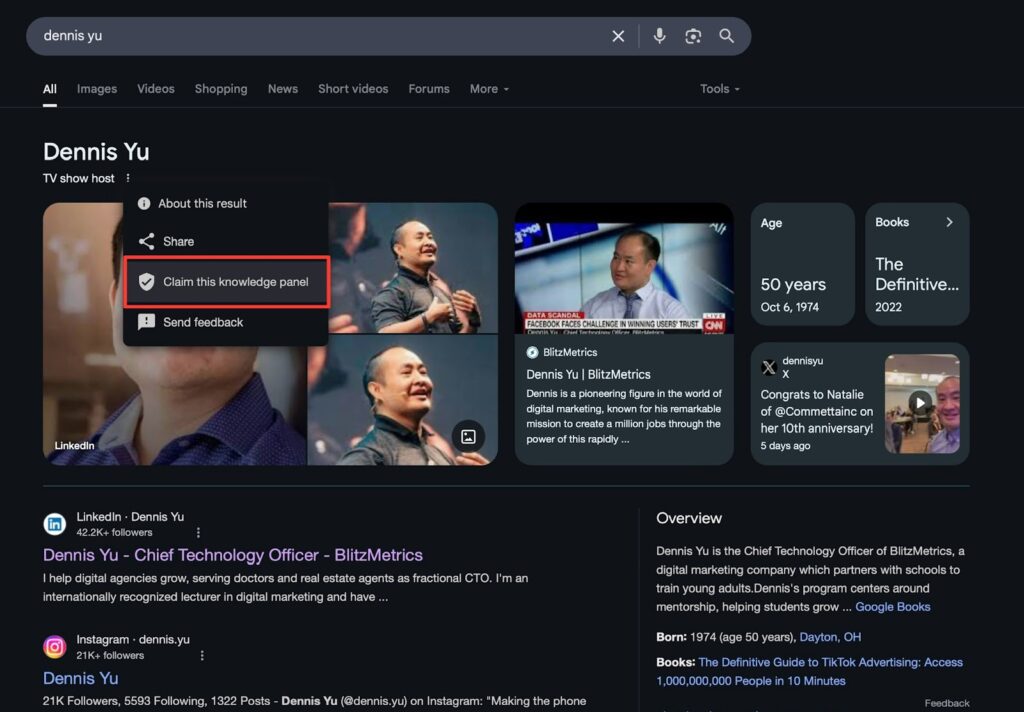
From there, avoid vague statements like “I want to manage it.” Instead, use:
I am [Your Full Name], featured in [X], contributor to [Y], active in [Z]. My profiles include [LinkedIn, YouTube, Website, etc.].
Claims that align with indexed, verifiable data are far more likely to succeed.
5. Verify Your Identity
To verify your Knowledge Panel claim, Google typically requires:
- Screenshots showing you are logged into your social accounts (LinkedIn, YouTube, Facebook, Instagram, Twitter/X)
- Email verification — use an email address that you currently have access to
If you provide aligned and verifiable materials, verification usually happens within 24–48 hours.
How to Edit Your Knowledge Panel After Claiming It
Once you’ve claimed your Knowledge Panel, you can request updates to keep it accurate and aligned with your online presence.
Here’s how to do it:
1. Go to Your Knowledge Panel
Search your name on Google while logged into the account used to verify your panel. If your panel appears, you’ll see a “Suggest edits” button in the top-right corner.
2. Click the Three Dots Next to Your Name
Click the three-dot menu to open feedback options. You’ll be prompted to choose what you’re giving feedback on—whether it’s a profile link, image, or general information.
3. Add Supporting URLs
To increase your chances of getting your updates approved, include authoritative links that confirm the information you’re suggesting. Google requires a source for nearly every edit request.
Tips:
- Link to your verified LinkedIn, personal brand site, or published press
- Make sure the information already appears in Google’s index
- Avoid vague edits—back up your suggestions with structured, consistent citations
Google may not accept every suggestion, but with clear evidence and consistent branding, you can continue refining how you’re represented in search.
Real Example
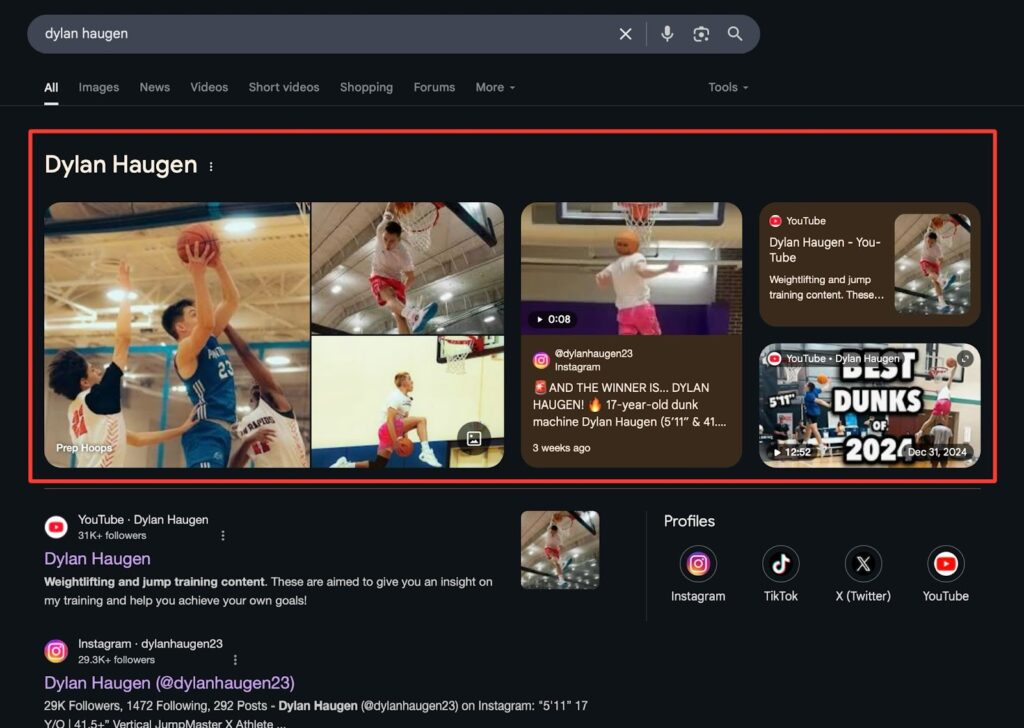
Dylan Haugen, professional dunker, host of the Dunk Talk, and manager at BlitzMetrics used this exact process:
- Created a personal brand site
- Connected related profiles and mentions across platforms to help Google recognize him as a unified entity
- Published blog posts based on his podcast, speaking engagements, and social media content
- Claimed and verified his Knowledge Panel
He is now verified on Google, appears in search results with properly structured citations, and is used as an example for others following the same process.
“Getting verified wasn’t about being famous. It was about proving credibility through real achievements and connecting them properly.” — Dylan Haugen
Done-for-You Knowledge Panel Service
Want to build a high-authority presence without trial and error?
This package is built for professionals who already have credibility—and want to structure it properly so Google recognizes them.
Who This Is For
- Business owners making at least $50K/month
- Entrepreneurs, authors, and experts with existing proof (press, media, results)
- Professionals who want to rank for their name and show up correctly in search
Not a fit if:
- You’re in MLM, adult, or get-rich-quick niches
- You’re a startup with no presence yet
- You already have a full-stack marketing team
What You Get
- A structured, SEO-optimized personal brand website built for Google
- Schema and structured data to connect your authority signals
- Setup and connection of Google properties (Search Console, Analytics, YouTube, etc.)
- Full Knowledge Panel support: triggering and verification
- Personal account manager to guide the entire process
- Content organization and management tools via the BlitzMetrics framework
- Ongoing training and access to the Content Factory, Topic Wheel, and 3×3 Video Grid systems
Our 4-Phase Process
- Onboarding – We collect your assets, bios, accounts, and citations
- Site Build – We create a WordPress-based personal brand website following our proven structure
- Knowledge Graph & SEO Setup – We integrate your content into Google’s ecosystem and connect the dots
- Launch – You approve everything before going live
This is not a training course. It’s done-for-you implementation—based on what we’ve built for real clients like Kim Butler, Keigan Carthy, and Anthony Hilb.
Final Word: Train Google or Be Forgotten
Search is evolving. AI-generated summaries now take up half of page one. Without a verified Knowledge Panel, your identity can be overwritten—or lost.
“Google is the ultimate fact-checker. If you don’t define yourself with evidence, AI will guess for you.” — Dennis Yu
Build it now. Teach Google who you are.
Then run ads against your verified profile using the $1/day strategy Dennis teaches—targeting ideal audiences on Twitter and LinkedIn.
Own your name. Own your narrative. Let’s get started.

